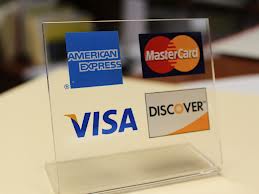Guide To Accepting Credit Cards
Every second, nearly 40,000 transactions are made by accepting credit cards in the United States alone. If your business isn’t accepting credit cards, you should probably begin soon. There are a variety of ways that your small business can begin credit card processing – from simple to high-tech solutions. You can utilize a merchant account from a credit card processing provider. Your choice will depend on a number of factors including your customers, your business, and your budget.
Processing Methods
Your small business has several options for accepting credit cards to your merchant account:
-Wired card swiping: This is the system for accepting credit cards that is most commonly found in small businesses. The cashier or customer swipes the card on the point of sale terminal or attached hardware, and the transaction is processed through the merchant account.
-Wireless card swiping: Accepting credit cards this way is similar to above, except the wireless terminal can be moved around as needed. An optional wireless printer can produce paper receipts for customers.
-Mobile Point of Sale system: These systems for accepting credit cards range from a simple app that coordinates with a small card-swiper that plugs into your mobile device, to large multiple-device systems implemented by large retailers
–Accepting credit cards online: Customers input their credit card information on an online form or a virtual gateway. The ecommerce system provider or the merchant account provider processes the transaction, takes out fees, and distributes the funds to the retailer’s bank account.
Rates & Fees
The fee structure involved with accepting credit cards is complex, as it involves charges that go to the bank that holds your customer’s card, the bank that holds your business account, and the processing provider that moves money from one to the other.
The interchange and assessment fees are composed of a flat rate plus a percentage of the transaction amount that goes to the bank that issues the card for each transaction; this fee is non-negotiable. The processor markup is the fee for your business’s merchant account and IS negotiable – the amount depends on transaction amount, type, and your company’s risk profile. This fee will vary amongst different providers, so shop around for the best rate.
- Most of your regular transactions should be charged the qualified rate, the lowest possible rate for the processor markup. Rewards cards, business cards, and keyed transactions may be charged the mid-qualified rate. The non-qualified rate (the highest) is charged for risky transactions, such accepting credit cards keyed without address verification or contains other missing fields.
- You may also be responsible for application, per-transaction, monthly minimum, and monthly statement fees. Read your contract carefully to find out which fees will apply to you.
Security
Whenever you collect, transmit, or are accepting credit cards, your business is held to the Payment Card Industry Data Security Standard (PCI DSS). This standard sets up security guidelines that businesses must follow in order to protect their customers from fraud and data theft. The PCI DSS applies to your business no matter which method you use to process credit cards.
In order for you to remain PCI compliant, you need to:
- Maintain an encrypted wired or wireless network connection over which you transmit secure data.
- Control who has access to card information within your business, through the use of separate logins for cashiers and varied levels of access.
- Monitor your credit card processing system and regularly test it for weaknesses when accepting credit cards.
Whether you process credit cards at the front counter of your business or through an online portal, your business will be held responsible for fines, penalties, and other damages should customer data become compromised by your system. (Even more so in the future with the advent of EMV chips.) When searching for a method for accepting credit cards, look for one that boasts high security measures, fits within your budget, and most importantly, compliments how your customers use their credit cards.


